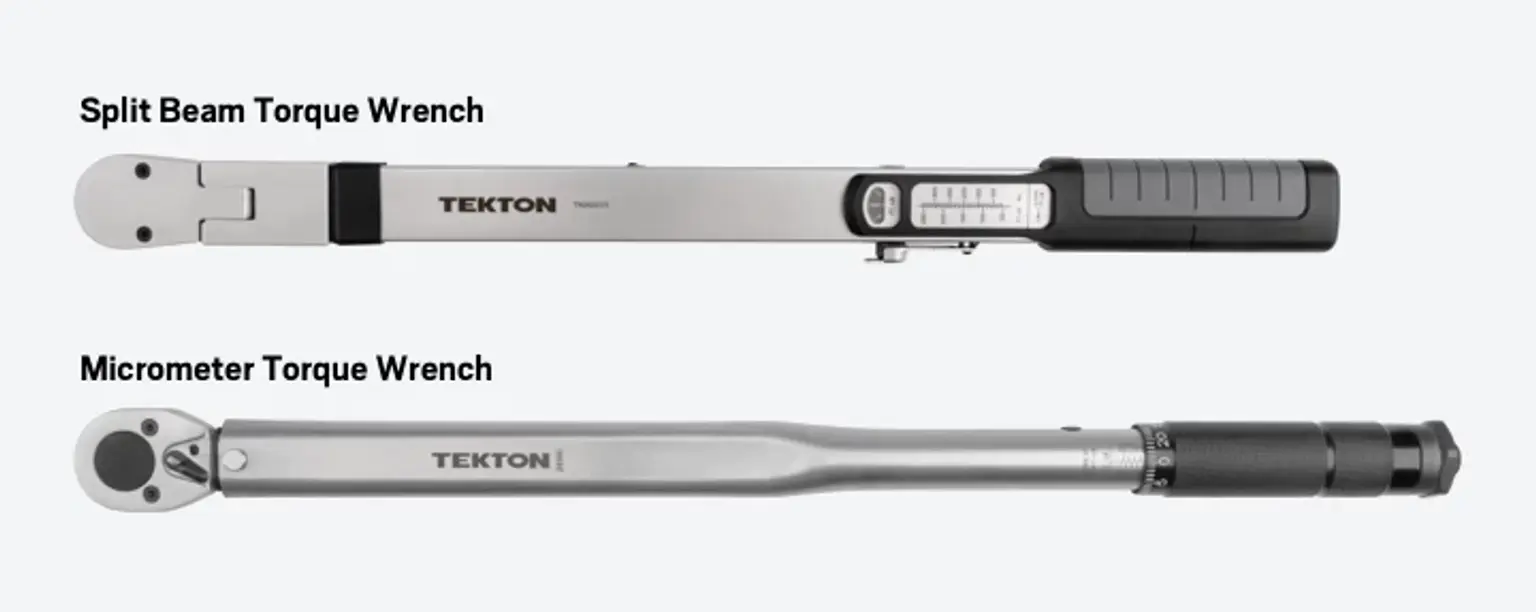
WRENCHES
Torque Wrench Accuracy and Calibration
Torque wrenches are only as accurate as your ability to use them. Too many people focus just on the factory calibration. There’s no doubt that proper calibration is important, but, in reality, your own technique often has a bigger effect on accuracy.
The Science Behind Measuring Torque
Torque is rotational force—the force you exert when swinging a bat, pushing a merry-go-round, or closing a door, for example. When you turn a fastener (say, a screw connecting two pieces of wood or a lug nut attaching a wheel to your car), you use torque, or rotational force. As it turns, the fastener compresses the materials being fastened. They push back on the fastener like a spring and can even stretch it. These forces increase friction and make the fastener harder to turn. Torque wrenches measure fastener tightness—how much force it takes to keep turning the fastener against rising friction. With this measurement, you can clamp down a fastener with the right amount of pressure or load.
But there is more to understanding whether your torque readings are accurate. The torque wrench only measures how much rotational force it takes to turn the fastener, not the clamping load itself. So the torque wrench will only achieve the clamping load you expect if you are turning a fastener under the conditions that the manufacturer assumed when setting the torque specification. In general, the amount of friction depends on multiple factors including surface coatings, temperature, materials, and fastener shape and size. If those factors vary unexpectedly, you may get unintended results that are outside the calibrated accuracy range of the torque wrench.
For example, if you are working with bolts covered in grease, but your torque specification is for dry metal bolts, you can assume you’ll overtighten the fastener. With grease on the threads, the fastener will slip more easily against the material in which it is turning. It won’t feel tight enough even as it is clamping down with greater and greater load as it turns.

4 Tips For Maximizing Accuracy When Using Your Tekton Torque Wrench
- Look carefully. You have to set the torque wrench with your own eyes. If you accidentally set the dial at 98 or 102 when you mean to set it at 100, you have introduced extra error. This can happen if you are looking at the scale at an angle.
- Turn the torque wrench slowly and steadily, stopping when you hear or feel the click, which indicates that the desired torque setting has been reached. Turning the fastener past the click means you have applied extra, unintended clamping load. Swinging the torque wrench rapidly means you might swing right past the click.
- Pay attention to the conditions under which torque is measured. If the specifications indicate a 120 ft.-lb. torque on a dry fastener, you won’t obtain highly precise measurements when your fastener is greasy or unusually hot, for example. Depending on the conditions, you might still get quite close. You will have to judge whether close is adequate for your purposes. Over-torquing can result in broken parts and early deterioration. Under-torquing can result in loose parts, which can fail or come apart unexpectedly.
- Push only on the handle, without applying force anywhere else on the wrench body. The torque wrench measures force at the pivot point just below its head. It has been calibrated so that this force accurately corresponds to the amount of torque shown on its scale only when you apply force on the handle and nowhere else. Most Tekton torque wrenches have a line or groove in the handle to indicate where you should push on the tool. If a line or groove is not present, use the center of the handle.

